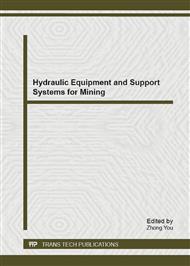p.290
p.298
p.302
p.306
p.310
p.315
p.321
p.325
p.329
Thermodynamic Analysis for Organic Rankine Cycle Recovery System in Industrial Waste Heat
Abstract:
For recovering low temperature waste heat from industrial process efficiently, the organic Rankine cycle (ORC) was puts forward to use for thermal power generation. The flue gas parameter of waste heat from a cement kiln was set the research object and ORC system thermal analysis model was established using R123 as working fluid. A calculation program was carried and two main factors were given and the influence rules of thermodynamic performance were analyzed. The results show that the net work of system increases first and then decreased with the evaporating temperature and pressure and a parabolic rule is formed. The maximum net work is 4510kW and corresponding optimum evaporating temperature and optimal evaporating pressure are 140 °C and 1.46MPa respectively; The thermal efficiency increases with evaporating temperature and evaporating pressure increasing. The highest thermal efficiency can reach 12.68%.
Info:
Periodical:
Pages:
310-314
Citation:
Online since:
December 2012
Authors:
Keywords:
Price:
Сopyright:
© 2013 Trans Tech Publications Ltd. All Rights Reserved
Share:
Citation:


